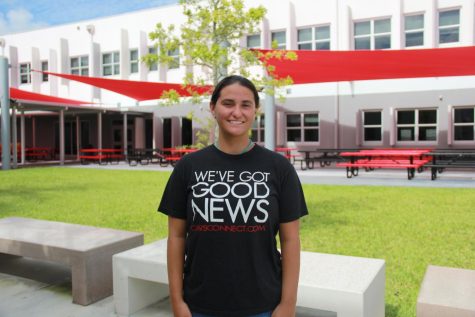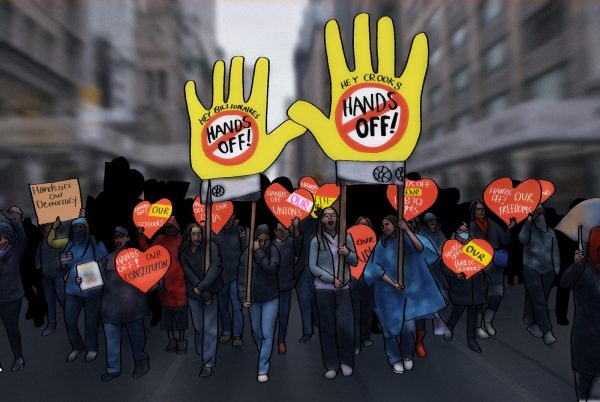Reality of Foster Care
This year’s Bridge for Peace cause was Dream Hatchery, a non-profit organization based in Miami that seeks to improve the lives of underserved youth and children like those who are in the foster care system through the benefits of art.
Many have heard or said the phrase “foster care is broken”; a phase which makes it simple to portray the system in broad strokes. Unfortunately, this is often the case with any serious issue. It is difficult to anticipate ideal outcomes in an imperfect environment where systems are operated and managed by flawed individuals. With a complex system, it is vital to discuss its difficult aspects in order to arrive at a thorough understanding. Foster care has a challenging reality, yet, if we simply discuss the jumbled parts, the picture is not complete.
“There’s clearly something wrong in the current system. First off, I’ve seen people suggest using faith groups to provide a home for foster kids. Secondly, I think it is extremely important to elevate the voices of people in foster care as I’m sure they have ideas in mind on how to better the situation they’re in. Finally, there should be a dedicated and well funded organization ensuring that the basic needs of these people are met,” senior James Montejo said.
Thankfully, about half of the kids in the foster care system will be reunited with their parents or primary caregivers in a secure manner. A quarter of them—often by their foster parents—will be adopted. On the other hand, more than 15,000 18-year-olds leave the foster care system every year without being adopted or reunited with their relatives. Although these rules are not common, several jurisdictions provide independent living services to assist these young people in making the move to adulthood.
There is a rising demand for foster parents who can look after young children across the country. The likelihood that a foster child will live with a foster home decreases as the individual gets older. Just 58% of those who are 13 and older live with a family, compared to 95% of children under the age of 12. Teenagers who leave the foster care system without a long-term support network are more likely to experience homelessness, motherhood before adulthood, incarceration and other problems. Connection is still important, even for foster youth who leave the system and succeed in their education, secure home and employment. Just turning 18 does not signify complete independence on an emotional level. Regardless of age, we all need to connect.
At first, caring for teenagers may seem intimidating. Nonetheless, a lot of foster parents have grown to adore the experience. There are numerous delights to be found when caring for children of all ages, though caring for a teen is undoubtedly different from caring for a baby or young child. Teenagers can be empowered by learning life skills from foster parents, but toddlers require more care for their basic needs.
The demand for foster homes that will take sibling groups is likewise quite acute. According to statistics, more than 50% of all foster children have one or more siblings. Keeping siblings together is beneficial for children’s development. Regrettably, statistics indicates that in more than 70% of placements, these siblings are split up. At Kaw Valley Center Health Systems, every effort is made to maintain sibling relationships in order to maintain that tie and sense of safety. This goal is made possible by the large number of foster homes that are willing to take siblings.
There is also a distinct demand for diversity among foster parents. In America, foster care placements for minorities are overrepresented. Though Black children make up 14% of all children in the United States, they also represent 20% of those who enter the child welfare system. Similarly, nearly 2% of children entering care are American Indian and Native Alaskan children; they represent only 1% of all US children. Children that identify as LGBTQIA+ are likewise overrepresented.
A strong cultural identity contributes, among other things, to psychological resilience, higher levels of social well-being, and improved coping skills. Because of this dissonance, former foster youth have weaker cultural identities than youth who have not experienced foster care.
“I think a way we make the foster care system better is about ensuring that the foster parents are responsible people. I remember watching a documentary where these kids were abused by their biological family and then again by their foster parents. They didn’t feed them or take them to school. I think the system should give foster parents lessons about how to take care of children that come from different situations. If the foster parents know how to deal with the kids trauma they can do a better job at taking care of them,” senior Mariana Nieto said.
The foster care system, according to some, needs to be changed and modified, and we can only do better once we are aware of better practices. But we do those who work in foster care a great disservice if we simply consider the system to be “broken.” Foster care is more than simply broken; it is a magnificent example of grace, forgiveness, and the transformative power of second chances when it is done right. Hence, in the end, Foster Care Awareness goes beyond simply looking at all the instances in which foster care has gone wrong. We could discuss that all day long. Nevertheless, we could also spend the entire day discussing all the ways that foster care succeeds.
Your donation will support the student journalists of Coral Gables Senior High School. Your contribution will help us cover our annual website hosting costs.

Jacqueline Rodero is a senior in the International Baccalaureate program. This is her second year as a CavsConnect staff writer. As she closes her time...







